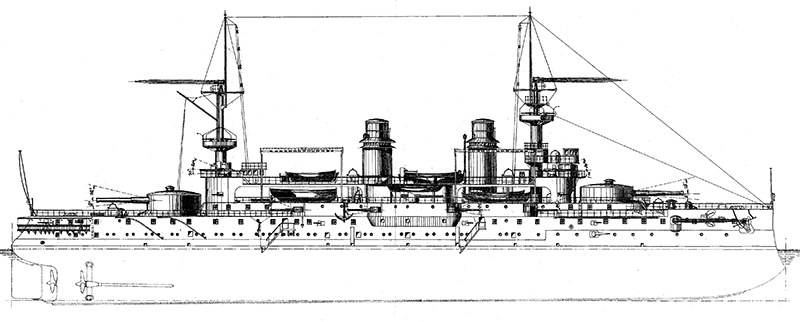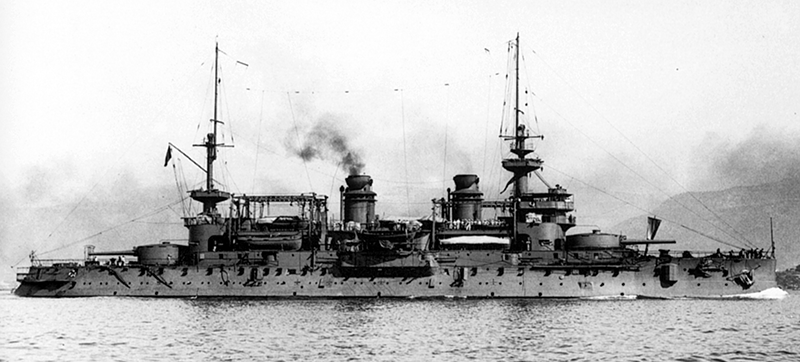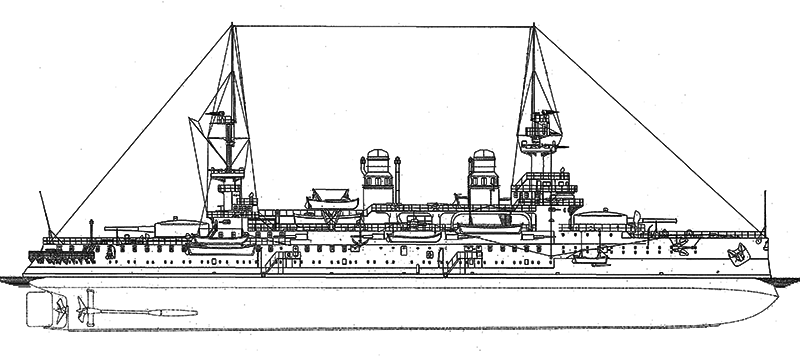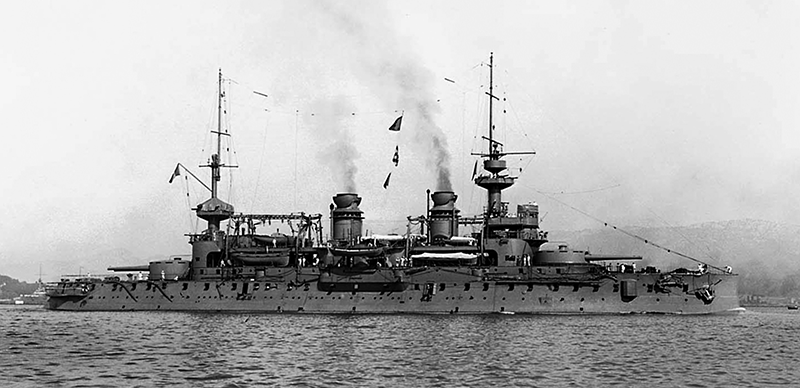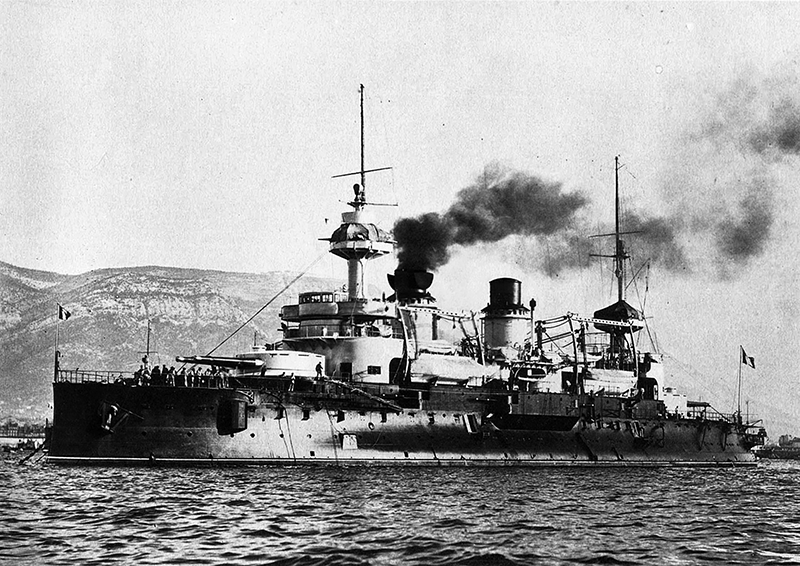
NAVYPEDIA
 Support the project with paypal
Support the project with paypal
Photo
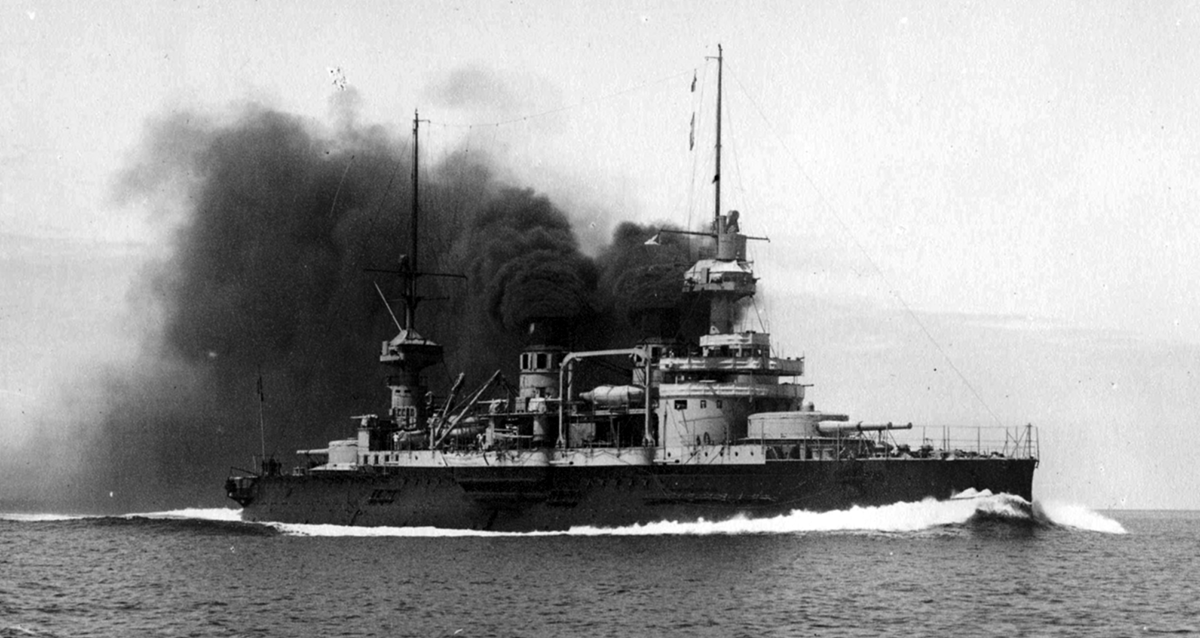
Saint-Louis
Ships
| Name | No | Yard No | Builder | Laid down | Launched | Comp | Fate |
|---|---|---|---|---|---|---|---|
| Charlemagne | Arsenal de Brest | 2.8.1894 | 17.10.1895 | 12.9.1897 | stricken 6.1920 | ||
| Saint-Louis | Arsenal de Lorient | 25.3.1895 | 2.9.1896 | 15.9.1900 | TS 2.1919, hulk 6.1920 | ||
| Gaulois | Arsenal de Brest | 6.1.1896 | 6.10.1896 | 23.10.1899 | sunk 27.12.1916 |
Technical data
| Displacement normal, t | 11100 |
|---|---|
| Displacement full, t | 11300 |
| Length, m | 114.0 pp 117.7 wl |
| Breadth, m | 20.2 |
| Draught, m | 8.38 max |
| No of shafts | 3 |
| Machinery | 3 VTE, 20 Belleville boilers |
| Power, h. p. | 15000 |
| Max speed, kts | 18 |
| Fuel, t | coal 1080 |
| Endurance, nm(kts) | 4200(10) |
| Armour, mm | Harvey Nickel steel; belt: 400 - 250, upper belt: 100, main turrets: 380, turret bases: 200, battery: 80, CT: 330, deck: 90 - 40 |
| Armament | 2 x 2 - 305/40 M1893-96, 10 x 1 - 139/45 M1891-93, 8 x 1 - 100/45 M1893, 20 x 1 - 47/40 M1885, 4 x 1 - 37/20 M1885, 4 - 450 TT (beam, 2 aw, 2 sub) |
| Complement | 694 |
Standard scale images
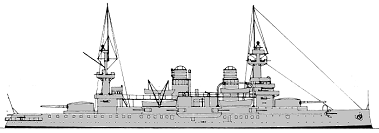
Saint-Louis 1900
Graphics
Project history
The first French battleships with two twin mountings for the heavy guns as was usual in most other navies. They were spoilt by the low displacement and in particular the small beam, and like previous French ships were exceedingly vulnerable to damage above the waterline. The 305mm guns were in centre pivot turrets at forecastle and upper deck level, whilst 8 of the 139mm were at upper deck level in the battery, the amidships part of which was sponsoned out over the tumblehome. The two other 139mm were in shields at forecastle deck level with the 100mm on the superstructure, and there were two relatively light military masts.
Ship protection
The bell was complete and extended from 0.5m above to 1.5m below water. Amidships it was 370mm for the upper 0.7m, tapering lo 200mm at the lower edge and to 300-250mm at the ends. The upper bell was taken to the main deck forward but elsewhere only to a height of 1m. There was a cofferdam inboard of this and the usual cellular layer between the armour decks. Of the latter, the deck at the belt upper edge had a max total thickness of 85mm and that at the lower edge 40mm to 20mm.
Modernizations
early 1900s: - 2 - 450 TT (aw).
Naval service
All three ships took part in the First World War and Gaulois was seriously damaged and had to be beached in the Dardanelles attack on 18.3.1915. The damage was caused by a large shell which burst below water close to the port bow and tore the hull plating below the armour shelf for 7.6m. The flood water spread via faulty ventilation trunks and Gaulois was lucky to survive. She was sunk the following year, 27.12.1916, by a torpedo from UB47 about 80 miles from Milo, remaining afloat for 25 minutes.
 HOME
HOME FIGHTING SHIPS OF THE WORLD
FIGHTING SHIPS OF THE WORLD FRANCE
FRANCE CHARLEMAGNE battleships (1897 - 1900)
CHARLEMAGNE battleships (1897 - 1900)